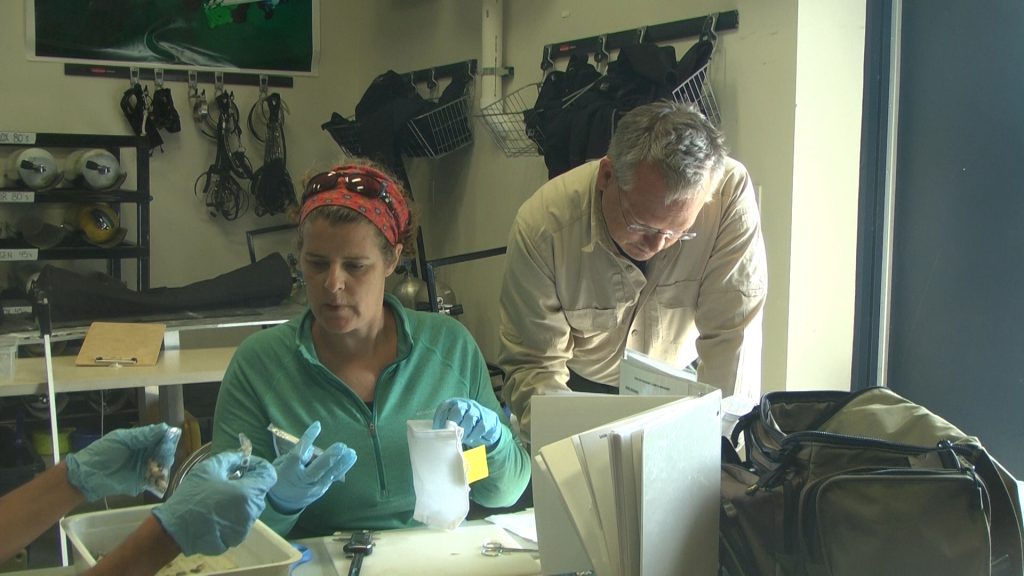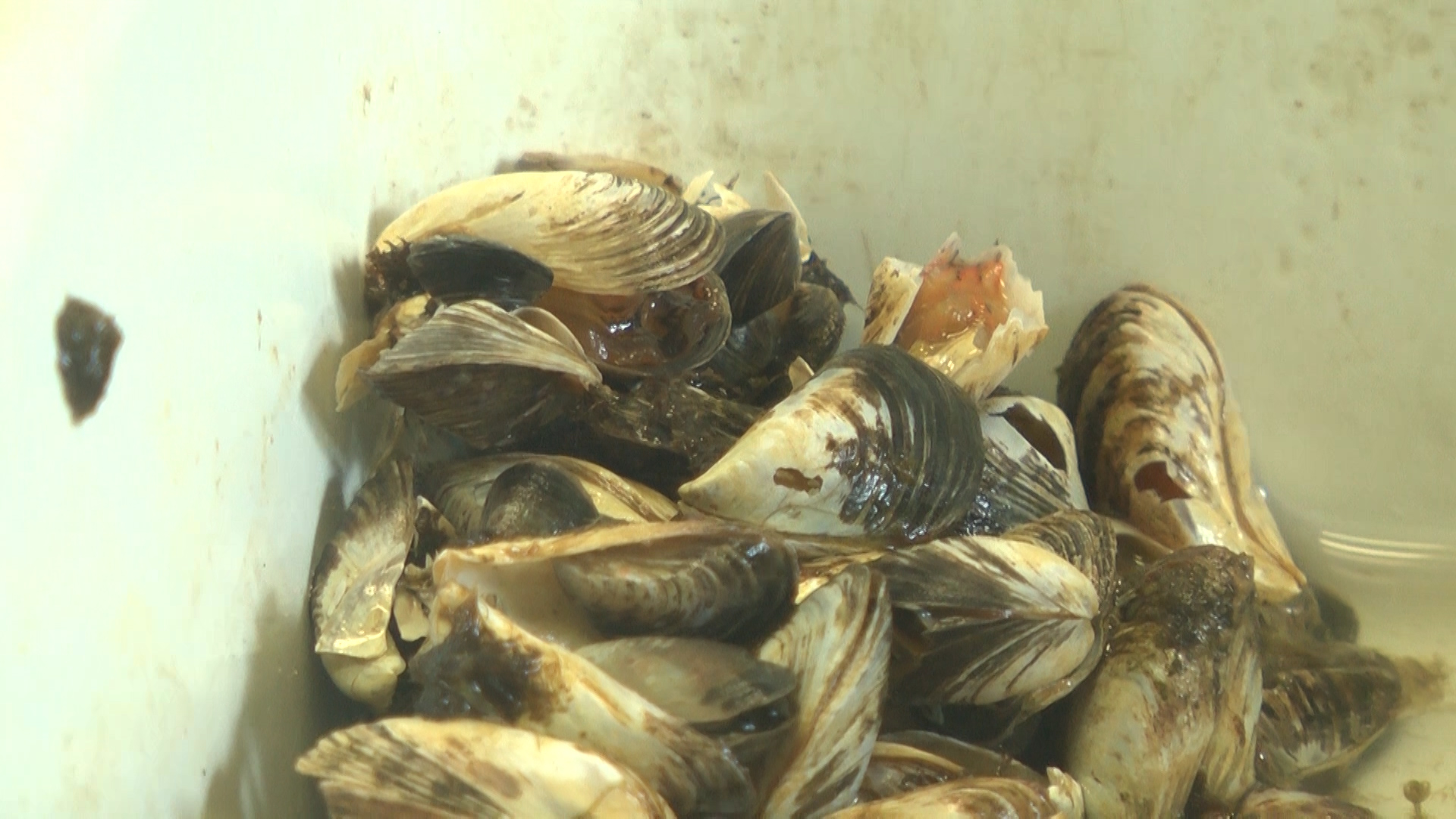Scientists Study Invasive Species To Track Chemical Contamination In The Great Lakes

Senior Scientist Ed Johnson and Oceanographer Shelly Tomlinson examine and bag up mussels at the Thunder Bay National Marine Sanctuary.
Alpena — Scientist from NOAA’s national headquarters in Silver Spring, Maryland spent the week in the Thunder Bay National Marine Sanctuary, working with their peers to gather the invasive zebra and quagga mussels.
Since the 1980s, these invasive species have made their way into the Great Lakes, endangering other species along the way. However, the mussels that are reeking havoc are also helping these scientist identify other potential problems in the Midwest and in the Great Lakes.
“They’re very good sentinel organism for monitoring the uptake or possibility of uptake of chemical contamination in any type of biological organism,” said Senior Scientist Ed Johnson.

The scientist are part of a national monitoring program called “mussel watch.” The program started in 1987 and helps track chemical contamination through bivalves, organisms with an enclosed shell like oysters, clams, mussels, and scallops. Their work in the Great Lakes began in 1992. With help from the members of the NOAA-Thunder Bay National Marine Sanctuary, divers collected zebra and quagga mussels to examine their biology and study the biological responses to determine if certain variations of chemicals are causing problems for other organism in that habitat.
“We as organisms respond in many ways similarly to stress, including chemical stress,” said Johnson. “Why take a salmon or a trout when you can take an invasive mussel that serves the purpose in many ways as a better tool for monitoring because they don’t move.”
The mussels will be used as the a clean site reference. Next week, the team heads to Milwaukee to study chemicals coming from the river and waste water outfall. They will be looking for chemicals from pharmaceuticals, hormones, therapeutic drugs, etc.
Funding for this type of research comes from the Great Lakes Restoration Initiative. The work is also supported by the Great Lakes Water Quality Agreement which is a bi-national treaty between the United States and Canada.
For more information of the Great Lakes Restoration Initiative, visit http://www.regions.noaa.gov/great-lakes/index.php/great_lakes-restoration-initiative/
For more information on the Great Lakes Water Quality Agreement, visit http://www.regions.noaa.gov/great-lakes/wp-content/uploads/2015/07/Great-Lakes-2015-Regional-Landscape-updated-05-28-15-4.pdf






